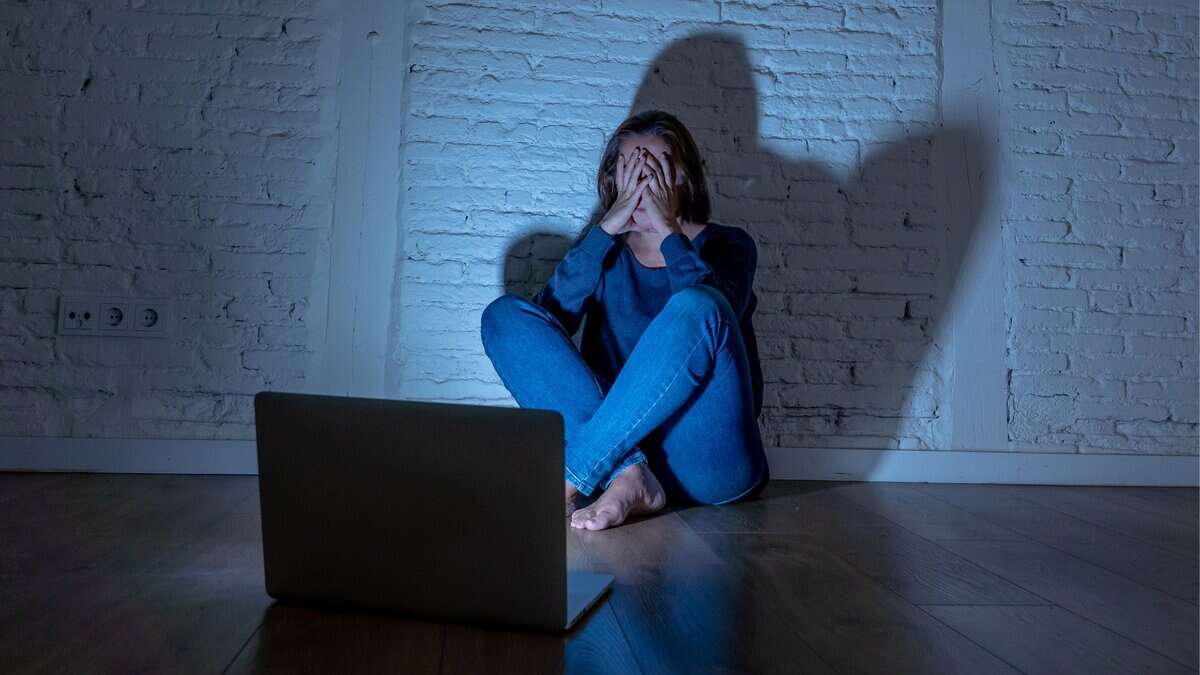
By A. L. Gayathri and Moumita Barman
In a society where shame and stigma continue to burden women disproportionately, new and vicious forms of online gender-based violence and harassment have emerged as powerful tools of intimidating and silencing women. From relentless trolling and rape threats to the circulation of morphed images, the digital sphere, once seen as a space for liberation, expression, and empowerment, has now become increasingly unsafe for women and girls across the world. Armed with anonymity and constant access, perpetrators now invade even the most private corners of a woman’s life, turning her phone into a source of fear and trauma.
The internet today has not erased the deep-rooted inequalities of the real world; instead, they now play out through our screens and social media feeds. Women from marginalised communities—Dalit, Adivasi, Muslim, queer, and trans-women—face compounded abuse. Misogynistic comments, casteist slurs, transphobic trolling, and religious prejudice have become a toxic reality for many. Cases like the “Bulli Bai” and “Sulli Deals,” where Muslim women were targeted through dehumanising online auctions, illustrate how these intersecting identities attract uniquely brutal forms of online violence. Women in rural and semi-urban areas find it challenging to report abuse or seek support due to the digital divide and low digital literacy, language barriers on digital devices, and limited access to legal resources. According to the latest Comprehensive Modular Survey on Telecom (2025) by the National Statistics Office, 51% of the women in rural India do not own a mobile phone, depriving many of even the most basic resources needed to engage in online activities safely.
Women in the public eye
Women who step into public spheres often find themselves disproportionately targeted by online abuse. Instances of doctored and AI-generated pornographic videos of public figures going viral are now increasingly frequent. During the U.S. election campaigns, doctored videos of Vice President Kamala Harris were widely circulated to discredit her through misinformation. According to a 2025 study by the Inter-Parliamentary Union (IPU), 60% of the surveyed women parliamentarians from the Asia-Pacific region have experienced online gender-based violence. This alarming statistic highlights the severity of the issue. Journalists, activists, or influencers who are vocal are often trolled and bullied. At the same time, their comment sections are flooded with obscene and sexually explicit remarks that are left unmoderated, normalising harassment as a part of women’s online experiences. Actresses and celebrities are often relentlessly trolled for their opinions, clothing choices, and public behavior, reflecting how misogynistic norms continue to police women’s visibility both online and offline.
The blurring lines
This phenomenon is not just limited to public figures. The recent conviction of the perpetrators of the 2019 Pollachi sexual assault case brought the horrifying incident back into public focus. Several young girls and women from Pollachi, Tamil Nadu, were befriended over social media, sexually assaulted, filmed without consent, and blackmailed for sexual and monetary favors. The leaked videos of the victims were circulated online, violating their right to privacy and exposing them to further trauma. The Pollachi case illustrates how online harm often spills into the physical world, jeopardizing women’s safety.
Newer and insidious forms of harassment like cyber flashing which involves sending unsolicited explicit images without consent, and digital voyeurism, which entails secretly recording or streaming someone’s private moments, have made online spaces increasingly unsafe. Young girls are particularly susceptible to online grooming, where adults manipulate them into entering into emotional, sexual, or exploitative relationships. Victims of cyber violence often suffer deep psychological trauma, including fear, anxiety, depression, and self-censorship, according to a 2020 report by Plan International, titled “Free to Be Online?”
Legal blind spots in India
The most concerning aspect of digital abuse is that it often goes unchecked and underreported. According to the research paper “Examining Technology-Mediated Violence Against Women Through a Feminist Framework” by Anita Gurumurthy, Amrita Vasudevan, and Nandini Chami (IT for Change), many women hesitate to seek legal recourse due to victim blaming, institutional apathy, and fear of social stigma. Unfortunately, courts have at times reinforced patriarchal narratives, thus making legal redressal difficult for women. In Vikas Garg and Ors vs. State of Haryana (2017), which involved a case of threat of disseminating nude images, blackmail, and sexual coercion, the Punjab and Haryana High Court made inappropriate remarks about the character of the woman, calling her “promiscuous,” reflecting a worrisome victim-blaming trend.
Despite the severity of the problem, India’s legal and institutional responses are woefully inadequate, failing to catch up with the increasingly complex digital harms. The primary issue is that there is a lack of specific and comprehensive legislation that addresses the many forms of online gender-based violence.
The current laws, primarily the Information Technology Act and provisions under the Bharatiya Nyaya Sanhita (BNS), fail to comprehensively address online abuse, and the abuse continues to remain fragmented. For instance, doxing, where personal information is published without consent, has no dedicated law, compelling reliance on existing statutes. Similarly, morphing or deep fakes, which are a growing menace, lack direct legal provisions, leading to their prosecution under older laws like forgery or sexually explicit material dissemination, under the various sections of the erstwhile IPC and present BNS, which may not fully capture the extent of the threat and harm. Also, existing laws often struggle to keep pace with rapid technological advances like sophisticated deep fakes that are difficult to prosecute effectively.
Learning from global responses
Governments around the world are increasingly taking a stronger stance on online abuse. In the United States, the recently enacted Take it Down Act criminalises the distribution of non-consensual intimate images, including deep fakes. The UK’s Online Safety Act (2023) and the European Union’s Digital Services Act place legal obligations on platforms to remove harmful digital content, including AI-generated content, and protect users. Australia’s eSafety Commissioner Model, which is an independent regulator for online safety, is another example of a victim-centered, rapid-response framework that India could adopt.
India’s response continues to lag and is hindered by fragmented laws. Platform accountability must be enforced, and social media platforms must be compelled to implement robust content moderation, transparent takedown procedures, and efficient reporting systems.
As digital spaces increasingly become extensions of lives, ignoring the threats and harms in these spaces puts millions of young girls and women at risk. Each slur, threat, or morphed image can lead to a woman who might silence herself, retreat from public life, or live with perpetual fear, stigma, and trauma. To truly make the internet a space for empowerment rather than fear, India should move beyond piecemeal fixes and craft a comprehensive legal framework to ensure a safe internet for every woman, regardless of caste, religion, or community.
A. L. Gayathri, a Research Intern at the Centre for Development Policy and Practice (CDPP), holds a Master’s degree in Political Science. Her interests span gender studies, social exclusion, education, and public health. On the other hand, Moumita Barman is a Senior Research Associate at CDPP.



